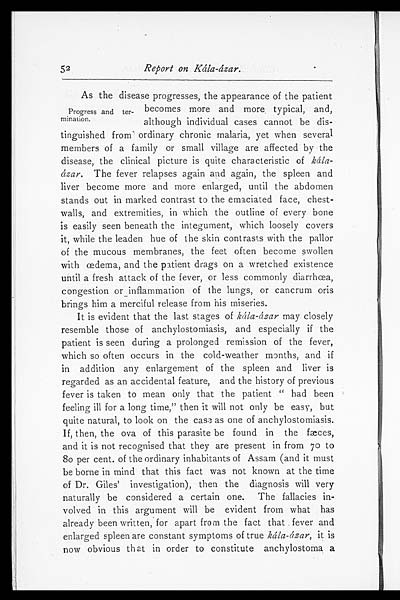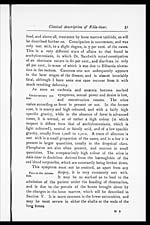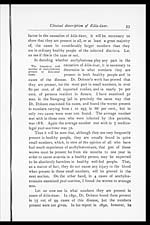Medicine - Institutions > Army health reports and medical documents > Report of an investigation of the epidemic of malarial fever in Assam, or, kala-azar > Section III - Clinical description of kala-azar
(72) Page 52
Download files
Individual page:
Thumbnail gallery: Grid view | List view

52
Report on Kála-ázar.
Progress and ter-
mination.
As the disease progresses, the appearance of the patient
becomes more and more typical, and,
although individual cases cannot be dis-
tinguished from ordinary chronic malaria, yet when several
members of a family or small village are affected by the
disease, the clinical picture is quite characteristic of kála-
ázar. The fever relapses again and again, the spleen and
liver become more and more enlarged, until the abdomen
stands out in marked contrast to the emaciated face, chest-
walls, and extremities, in which the outline of every bone
is easily seen beneath the integument, which loosely covers
it, while the leaden hue of the skin contrasts with the pallor
of the mucous membranes, the feet often become swollen
with œdema, and the patient drags on a wretched existence
until a fresh attack of the fever, or less commonly diarrhœa,
congestion or inflammation of the lungs, or cancrum oris
brings him a merciful release from his miseries.
It is evident that the last stages of kála-ázar may closely
resemble those of anchylostomiasis, and especially if the
patient is seen during a prolonged remission of the fever,
which so often occurs in the cold-weather months, and if
in addition any enlargement of the spleen and liver is
regarded as an accidental feature, and the history of previous
fever is taken to mean only that the patient "had been
feeling ill for a long time," then it will not only be easy, but
quite natural, to look on the case as one of anchylostomiasis.
If, then, the ova of this parasite be found in the fæces,
and it is not recognised that they are present in from 70 to
80 per cent. of the ordinary inhabitants of Assam (and it must
be borne in mind that this fact was not known at the time
of Dr. Giles' investigation), then the diagnosis will very
naturally be considered a certain one. The fallacies in-
volved in this argument will be evident from what has
already been written, for apart from the fact that fever and
enlarged spleen are constant symptoms of true kála-ázar, it is
now obvious that in order to constitute anchylostoma a
Set display mode to: Large image | Zoom image | Transcription
Images and transcriptions on this page, including medium image downloads, may be used under the Creative Commons Attribution 4.0 International Licence unless otherwise stated. ![]()
| Permanent URL | https://digital.nls.uk/75014438 |
|---|




